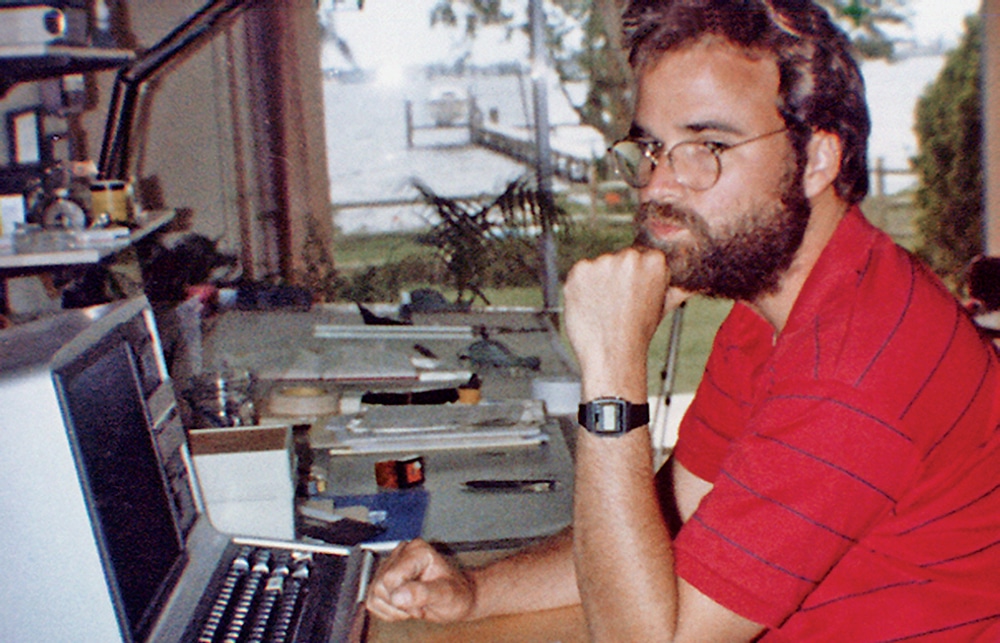
Old-School Yachtsman Meets New-School Technology
Old habits are sometimes hard to break. This thought occurred to me the other day while my wife, Nelia, and I were wandering the backcountry in an effort to catch dinner. We were aboard our new 18-foot Hewes Redfisher. “Where’s the compass? You promised to get one,” she said.
“Err … ahhh … right here, dear,” I said sheepishly as I fiddled with the new GPS plotter.
“That is not a compass. Our old skiff had a compass,” she insisted.
“This skiff is the future, dear … Don’t be old school.”
I have always been an early adopter, and technology has saved my ass over the years. The sight of a slide rule still terrifies me, and if it weren’t for the Texas Instruments calculator I doubt I would have managed to complete my studies in boat design. I certainly would never have stuck it out as a yacht designer if the personal computer had not come along to ease the tedium of hydrostatics, structural engineering and weight calculations.
The fact is that, if there had been a place to mount a compass on our new boat, I would have done so. The folks at Hewes are pretty smart, so I suspect that the helm’s design is just the way their customers wanted it. “Boaters today simply don’t have much use for a compass.” These are not my words, but the words of a compass adjuster I bumped into at the boatyard recently. He had swung Anhinga‘s compass years ago and I was glad to see he hadn’t gone the way of the mule skinner.
“How’s business?” I asked.
“What business? I get a couple of calls a month and they’re usually wrong numbers,” he grumbled. It seems dividers, parallel rules and paper charts have all suffered the same fate. I still have reams of moldy editions stuffed under the salon sofa that I dig out when we cruise, but I confess that I rarely look at them. I have come a long way from flasher sounders and paper-chart recorders — Anhinga‘s electronics package includes a 3.5 kW sounder, a 72-mile radar and plotting software, all networked to two 10-inch displays. I made the $18,000 investment in 2004 and my electronics pals tell me the stuff’s already out of date. I’ll admit, compared with the compact $900 unit on our new Hewes, Anhinga‘s electronic charts look like they were drawn with a crayon.
I’ve come a long way with outboard motors as well, having earned my first command in 1968 at the end of a pull starter for an 18-horsepower Evinrude. Even our old skiff’s 1996, two-stroke 150 is a dinosaur compared with the new Hewes’ high-tech four-stroke Yamaha. At first I was shocked — since it cost more than a new Hyundai — but now I’m hooked. It starts without complaint and is so quiet at idle I am never quite sure whether it’s running. It sips fuel at a rate that causes me to tap the gauge and it is maintenance free (at least for me) — so, unlike with my old motor, I have no idea what’s going on under the hood.
While I’m an early adopter I admit I’m also a late bloomer, so I have a few old habits that I’m not sure I want to break. I have been driving boats pretty much the same way for the last 45 years, and when it comes to point-and-shoot joystick parking, I’m simply no match for the average teen who’s been reared on an Xbox. It seems sad that basic boating — reading charts, wiggling clutches and, yes, using a compass — has become, well … old school. Just maybe my wife has a point. Maybe old habits aren’t so bad after all.
“It’s that way,” my wife said.
“The future?” I asked, absorbed in my iPhone’s compass app.
“No, the dock,” she instructed, holding up a handheld compass.









